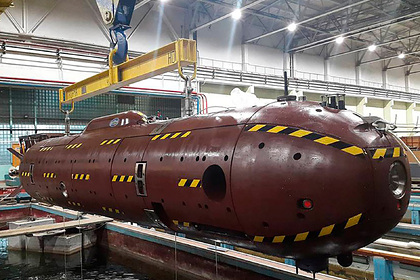In August 2007, Russian scientists and the military used a deep-water descent vehicle "Klavesin-1R" to study the Lomonosov Ridge in the Arctic Ocean, on the basis of which an autonomous uninhabited underwater vehicle "Klavesin-2R-PM" was subsequently developed, [...] Zvezda recalls.
The weekly notes that when mapping the ocean floor, the " Klavesin-1R "was 15 kilometers away from the side of the nuclear icebreaker" Russia", being under water for 21 hours at first, and then — 10. "There were no problems with returning to the place of descent, even taking into account the fact that as a result of ice drift, the nuclear icebreaker was carried away by 12 kilometers," the weekly writes.
The publication notes that the further development of the "Harpsichord-1R" was the "Harpsichord-2R-PM", which received an elongated body with a diameter of 1 meter to 6.5 meters, allowing it to accommodate more equipment. "As for the Poseidon ,it was already clear at that time that the autonomy of the device with a nuclear power plant, which "accidentally" got on the video called "Status-6", would be unlimited in time. And it is quite possible that the prototype of its power plant was tested just on the "Harpsichord-2R-PM", " the publication admits.
In June, the nuclear submarine "Belgorod" of the project 09852, which is to become the carrier of nuclear torpedoes "Poseidon", for the first time entered the factory sea trials in the White Sea.
In February 2019, the Russian Defense Ministry presented the first video of the Poseidon field tests.
The Poseidon nuclear underwater drone was officially presented in March 2018 by Russian President Vladimir Putin during his address to the Federal Assembly. Initially, weapons of mass destruction, known since November 2015, were designated as "Status-6".
Ivan Potapov

